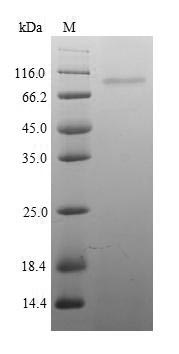This recombinant Mouse Itgb1 protein is an E.coli expressed mature Extracellular Domain protein with N-terminal 6xHis tag and its purity is 90%+ determined by SDS-PAGE. With the appropriate cDNA and PCR methods, Itgb1 expression plasmids can be rapidly produced. which must undergo denaturation and folding cycle, can be recovered with more modest yields. Hence, using small-scale fermentations and laboratory-scale processing equipment, Itgb1 proteins (or subdomains thereof) can usually be produced in sufficient quantities to initiate most studies including detailed structural determinations.which must undergo denaturation and folding cycle, can be recovered with more modest yields. Hence, using small-scale fermentations and laboratory-scale processing equipment, Itgb1 proteins (or subdomains thereof) can usually be produced in sufficient quantities to initiate most studies including detailed structural determinations.
Itgb1 is involved in cell adhesion, migration, and proliferation, among other cellular functions. Itgb1 is overexpressed in cancer cells, contributing to epithelial-mesenchymal transition (EMT) and tumor metastasis, among other malignant characteristics. It has been discovered that Itgb1 promotes gastric cancer cell proliferation, survival, and motility. Through negative regulation of the Notch pathway, Itgb1 can greatly enhance glioma cell proliferation. Itgb1 is a key player in the formation of vasculogenic mimicry (VM) in human cancer cells, suggesting suppression of Itgb1 could be a promising new treatment option for cancer.






